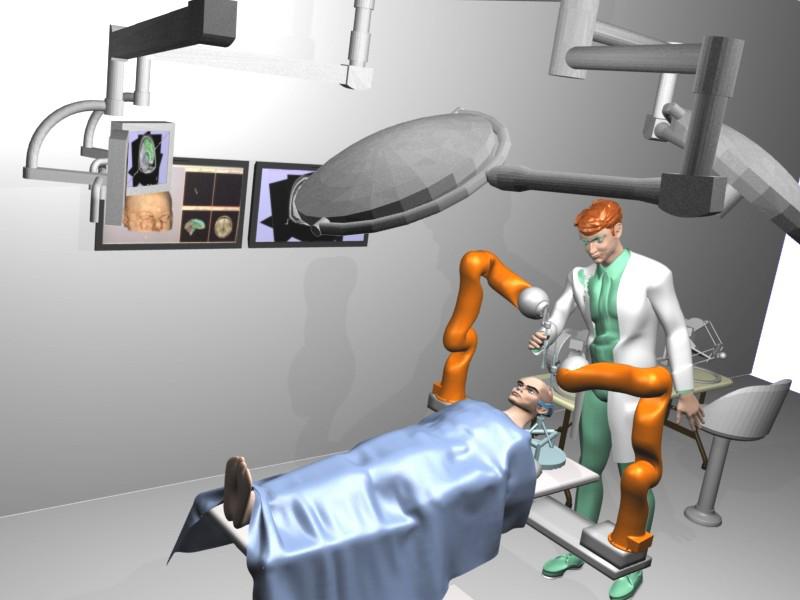Active Constraints Technologies
for Ill-defined or Volatile Environments
FP7-ICT-2009-6-270460
FP7 -
Information Communication Technology
ICT Challenge 2.1: Cognitive
Systems and Robotics
The DG Information Society & Media, sector E1 Cognitive Systems and Robotics Luxembourg
For further information, materials and on-going work, please refer to NearLab website.

The ACTIVE project exploits ICT and other engineering
methods and technologies for the design anddevelopment
of an integrated redundant robotic
platform for neurosurgery. A light and agile redundant
roboticcell with 20 degrees-of-freedom (DoFs) and an
advanced processing unit for pre- and intra-operative
control willoperate both autonomously and cooperatively
with surgical staff on the brain.As the patient will not
be considered rigidly fixed to the operating table
and/or to the robot, the system will pushthe boundaries
of the state of the art in the fields of robotics and
control for the accuracy and bandwidth requiredby the
challenging and complex surgical scenario.
Two cooperating robots will interact
with the brain that will deform for the tool contact,
blood pressure, breathing and deliquoration. Human
factors are considered by allowing easy interaction
with the users through a novelhaptic interface for
tele-manipulation and by a collaborative control mode
("hands-on"). Active constraints will
limit and direct tool tip position, force and
speedpreventing damage to eloquent areas, defined on
realistic tissue models updated on-the-field through
sensorsinformation. The active constraints will be
updated (displaced) in real time in response to the
feedback fromtool-tissue interactions and any additional
constraints arising from a complex shared workspace. The
overarchingcontrol architecture of ACTIVE will negotiate
the requirements and references of the two slave robots.
The
operative room represents the epitome of a dynamic and
unstructured volatile environment, crowded withpeople
and instruments. The workspace will thus be monitored by
environmental cameras, and machine
learning techniques will be used for the safe workspace
sharing. Cognitive skills will help to identify the
target location in the brain and constrain robotic
motionsby means of on-field observations.
Download the ![]() ACTIVE brochure or
ACTIVE brochure or ![]() ACTIVE brochure - German
ACTIVE brochure - German






